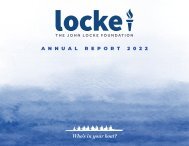Energy Crossroads: Exploring North Carolina’s Two Energy Futures
North Carolina’s Clean Energy Plan, a proposal put together by the Department of Environmental Quality at the behest of Governor Roy Cooper, calls for a 70-percent reduction of greenhouse gas emissions from electricity by 2030 and carbon neutrality by 2050. Duke Energy has submitted Integrated Resource Plans that include pathways to the Clean Energy Plan targets. Duke Energy’s Portfolio D most resembles the Clean Energy Plan, deploying wind, solar, and battery storage on an unprecedented scale. This report assesses North Carolina’s existing electricity portfolio, analyzes the changes proposed by Duke Energy’s Portfolio D, and compares that scenario to alternatives that utilize nuclear energy and natural gas to achieve emissions reduction rather than the Clean Energy Plan’s preferred wind, solar, and battery storage.
North Carolina’s Clean Energy Plan, a proposal put together by the Department of Environmental Quality at the behest of Governor Roy Cooper, calls for a 70-percent reduction of greenhouse gas emissions from electricity by 2030 and carbon neutrality by 2050. Duke Energy has submitted Integrated Resource Plans that include pathways to the Clean Energy Plan targets. Duke Energy’s Portfolio D most resembles the Clean Energy Plan, deploying wind, solar, and battery storage on an unprecedented scale.
This report assesses North Carolina’s existing electricity portfolio, analyzes the changes proposed by Duke Energy’s Portfolio D, and compares that scenario to alternatives that utilize nuclear energy and natural gas to achieve emissions reduction rather than the Clean Energy Plan’s preferred wind, solar, and battery storage.
You also want an ePaper? Increase the reach of your titles
YUMPU automatically turns print PDFs into web optimized ePapers that Google loves.
JOHN LOCKE FOUNDATION
35
present some alternative scenarios that we think would better serve the
state.
The six portfolios are designated in the following manner by Duke Energy:
Portfolio A — Base without Carbon Policy
Portfolio B — Base with Carbon Policy
Portfolio C — Earliest Practicable Coal Retirements
Portfolio D — 70-Percent CO 2
Reduction: High Wind
Portfolio E — 70-Percent CO 2
Reduction: High Small Modular Nuclear
Portfolio F — No New Gas Generation
Portfolio A
Portfolio A is the base case without carbon policy, i.e., the scenario operates
under current policy assumptions. While readers may intuitively
expect that this portfolio would lead to a stalling of emissions reduction,
even in the simple base case without carbon policy the current trend
continues and emissions drop precipitously. Since 2005, the Duke Energy
combined system has reduced its emissions by 38 percent. In the
base case without carbon policy, that figure reaches 53 percent by 2030.
This context is important to bear in mind when evaluating the costs associated
with the incremental emissions reductions in the other portfolios.
Portfolio A meets new load growth by adding more natural gas generation
to the electricity mix. It incorporates coal unit retirements based
on the most economic selections (see: IRPs Chapter 11), taking 3,200
MW offline by 2029. This portfolio adds 2,000 MW of nameplate capacity
solar and solar plus storage throughout the IRP planning horizon.
At the end of the IRP period, Duke Energy forecasts that battery storage
becomes more economical than combustion turbine natural gas
capacity for peaking purposes. That battery storage will come on top of











